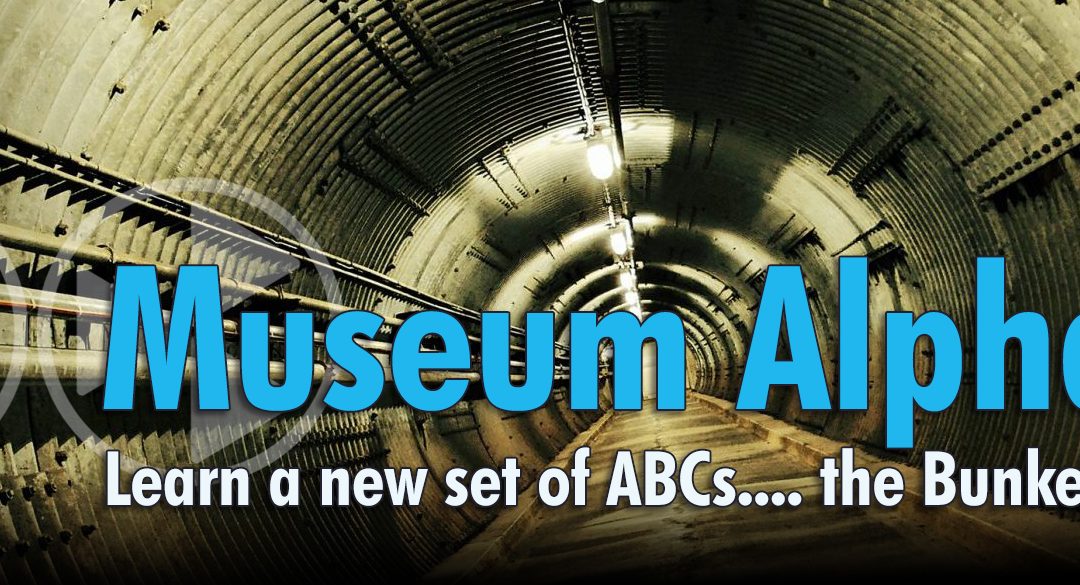As part of the #museumalphabet, we’ll uncover a new letter until we get to the letter Z. Then, you’ll know your (Bunker) ABCs.
A is for Air Raid Siren
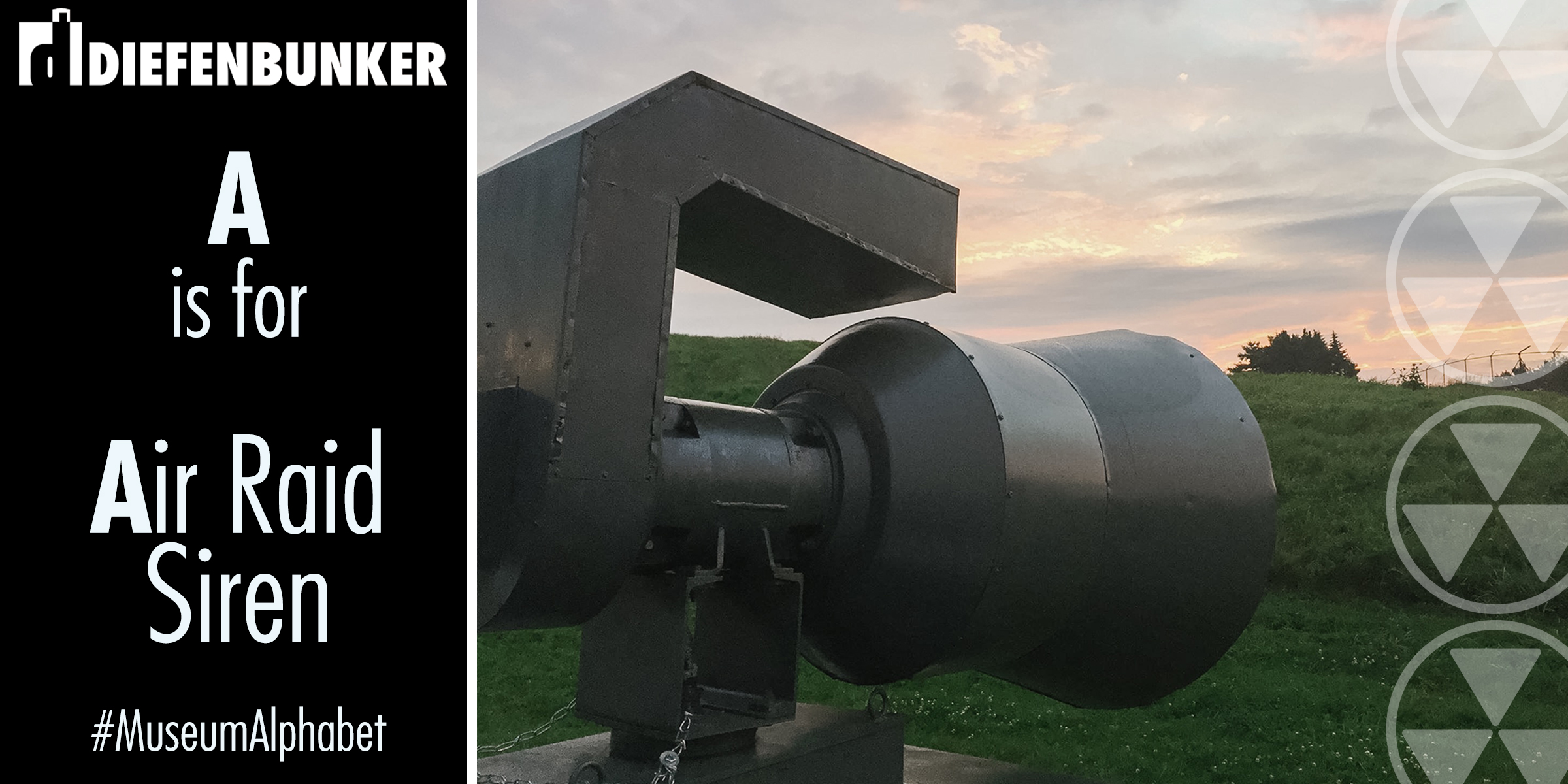
Air Raid Sirens alerted civilians to an impending attack so that they could take cover immediately. During the 50’s & 60’s, there were 1703 air raid sirens across Canada. They were incredibly loud and would be heard for several kilometres.
In the event of a nuclear attack, personnel at Canadian Forces Station Carp (aka the Diefenbunker) were responsible for triggering the air raid siren warning system across Canada. This responsibility switched between CFS Carp and the NORAD base in North Bay, Ontario.
If you were designated to take shelter at the Diefenbunker, when the air raid sirens sounded, you disappeared underground. You couldn’t tell anyone where you were going and should you return, you couldn’t tell anyone where you had been.
B is for Bomb
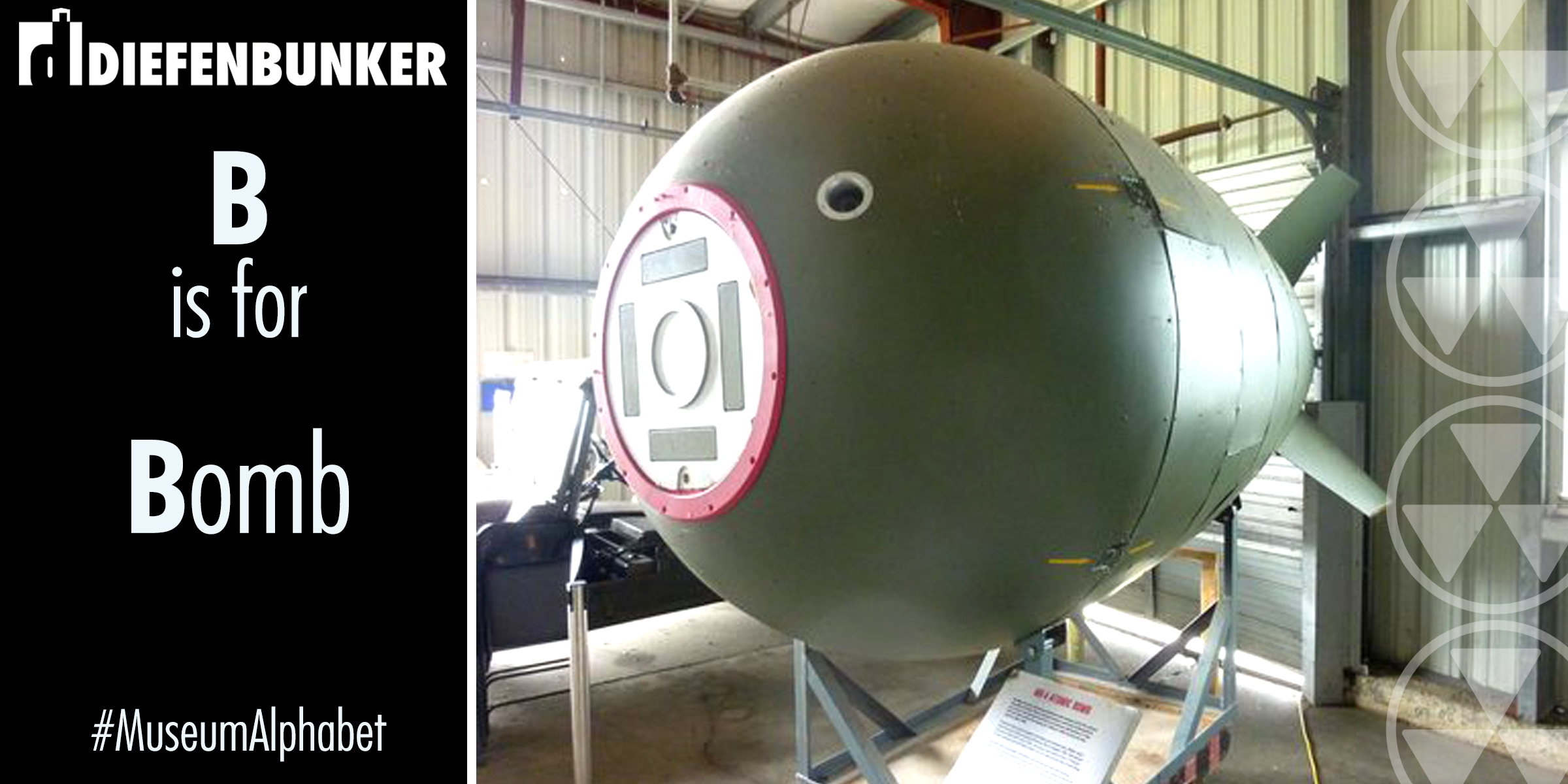
The Diefenbunker could withstand the blast of a 5 megaton nuclear bomb at a distance of 1.8 Km (1.1 miles) away.
Early Cold War bombs had very little accuracy. No matter how precise you tried to aim them, once they left the aircraft, they were at the mercy of the wind.
“How did we expect to get everyone out to the bunker before bombs started falling?”
During the Cold War, it was expected that there would be a period of rising tension. During that time, the Canadian Government would make the call that things had become sufficiently serious to start manning the bunker. Otherwise, the bunker is located 30km west from Parliament Hill and (at the time) took approximately 30 minutes by bus.
C is for CONELRAD System

Do you remember those two triangles (or with our radio you see CD) that used to be found on AM radios?
These were part of the CONELRAD System (CONtrol of ELectromagnetic RADiation). All AM radios made after 1953 were required to have these Civil Defence (CD) marks.
In case of national emergencies, all radio stations in North America would change from their normal AM frequency to 640 kHz or 1240 kHz. Selected CONELRAD stations would inform the public about emergency measures and serve to deceive incoming bombers.
This requirement was dropped when the CONELRAD system was replaced by the Emergency Broadcast System in 1963. Today, Alert Ready is Canada’s emergency alerting system.
D is for Decontamination
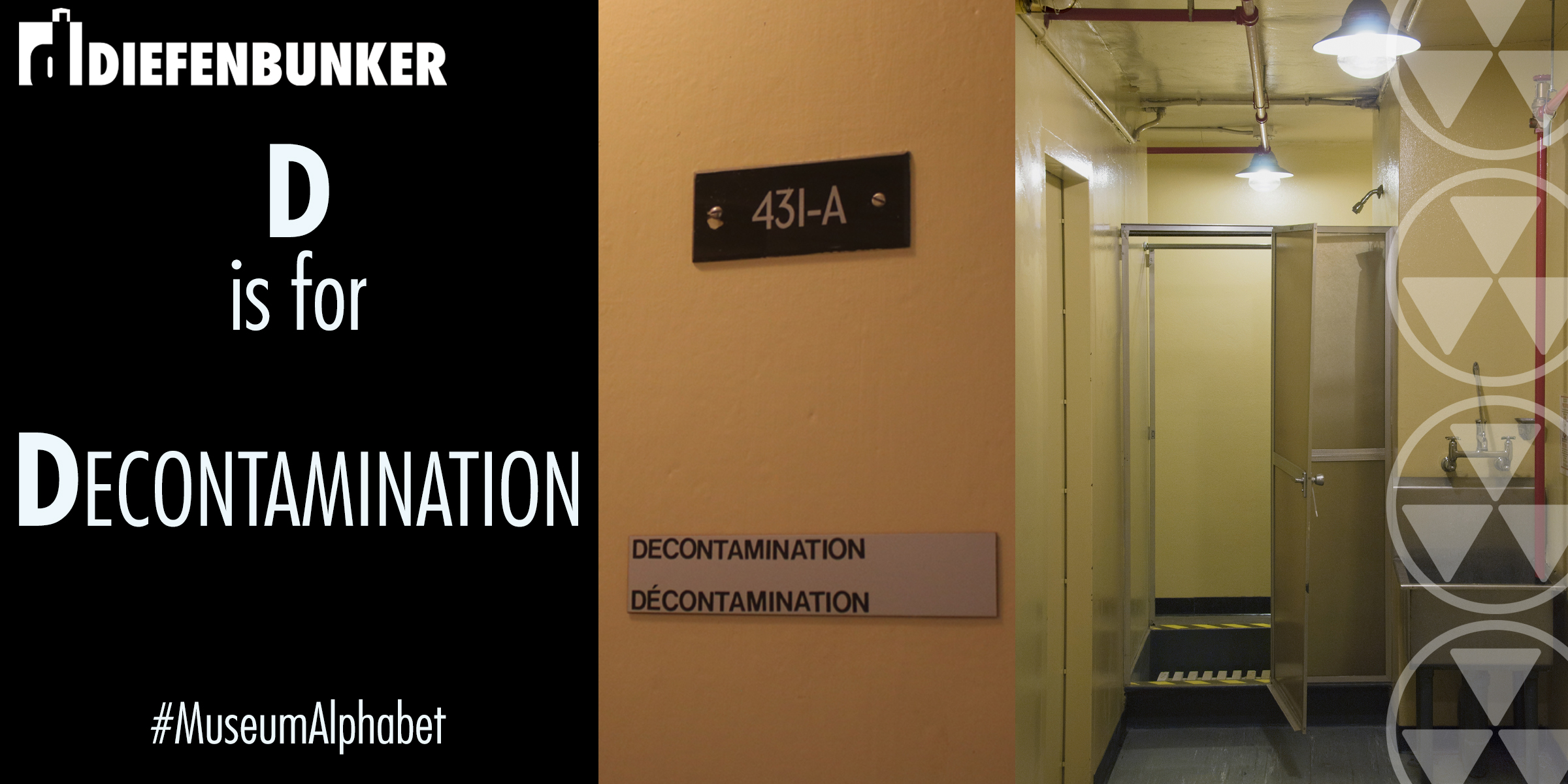
After a nuclear attack, if you made it to the Bunker, the only way inside was through the Decontamination Showers. The walls are lined with yellow lead paint. The lead is not harmful as long as you do not scratch or lick the walls.
Imagine the decontamination process:
- Upon arrival you immediately have a shower – fully clothed – to rinse away any radioactive dust, dirt, or debris that you have acquired outside.
- Then, you would strip off all your clothes and throw them down a clothing chute in the wall. Your clothing would fall into a lead-lined bag and would later be buried by a soldier.
- After this, you would take another shower without your clothes. You would be given a rough brush, some hot soapy water, and told to rinse your entire body.
- Finally, a soldier with a Geiger counter would check your radiation levels. If the levels were acceptably low, you could proceed to the Medical Centre.
- If you failed the radiation test after more than a few showers, you would still have remained in the Bunker but isolated to the medical centre or medical overflow for the remainder of lockdown. You still needed to work to run the country.
E is for Escape Hatch
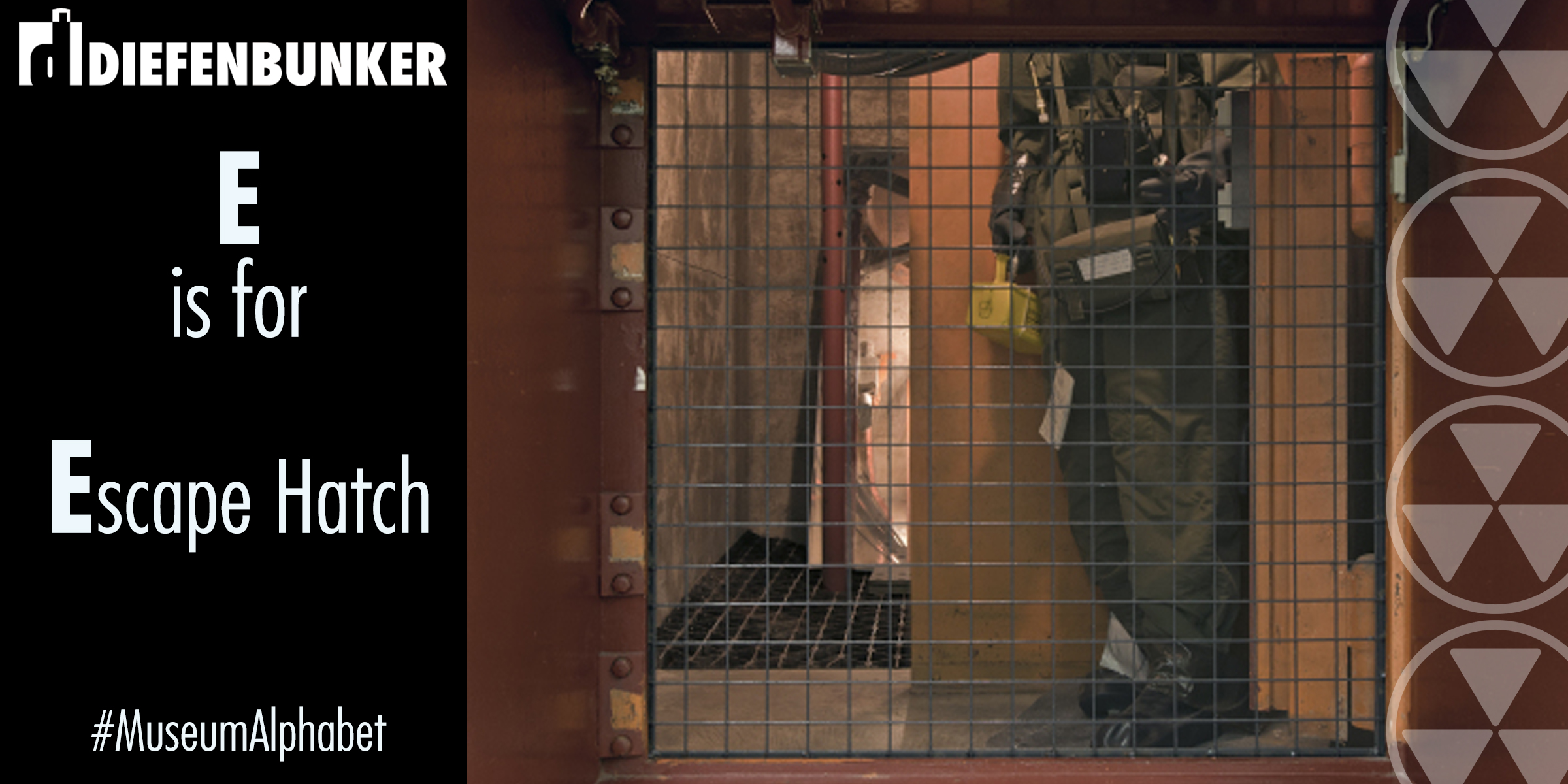
Did you know that there is only one entrance into the bunker? In the likely event that a nuclear blast would make it impossible to get out through that entrance (or exit), the bunker is equipped with two escape hatches as backups.
Each escape hatch includes a 25-foot-long vertical tunnel up to the surface and is topped with a Plexiglas skylight. The bottom of that tunnel is secured on the inside by a large lever. Inside the each of tunnel is 20 tons of pea gravel to stop radiation from entering the building.
When the lever is released, a grate in the floor with a large pit underneath would catch the gravel. The suction of the falling stones would pull in the skylight at the top, creating an opening to the outside world above. The shaft of the tunnel had a ladder, so one lucky official could climb up and see what was left of the world above.
Photo credit: Leslie Hossack
F is for Federal Warning Centre
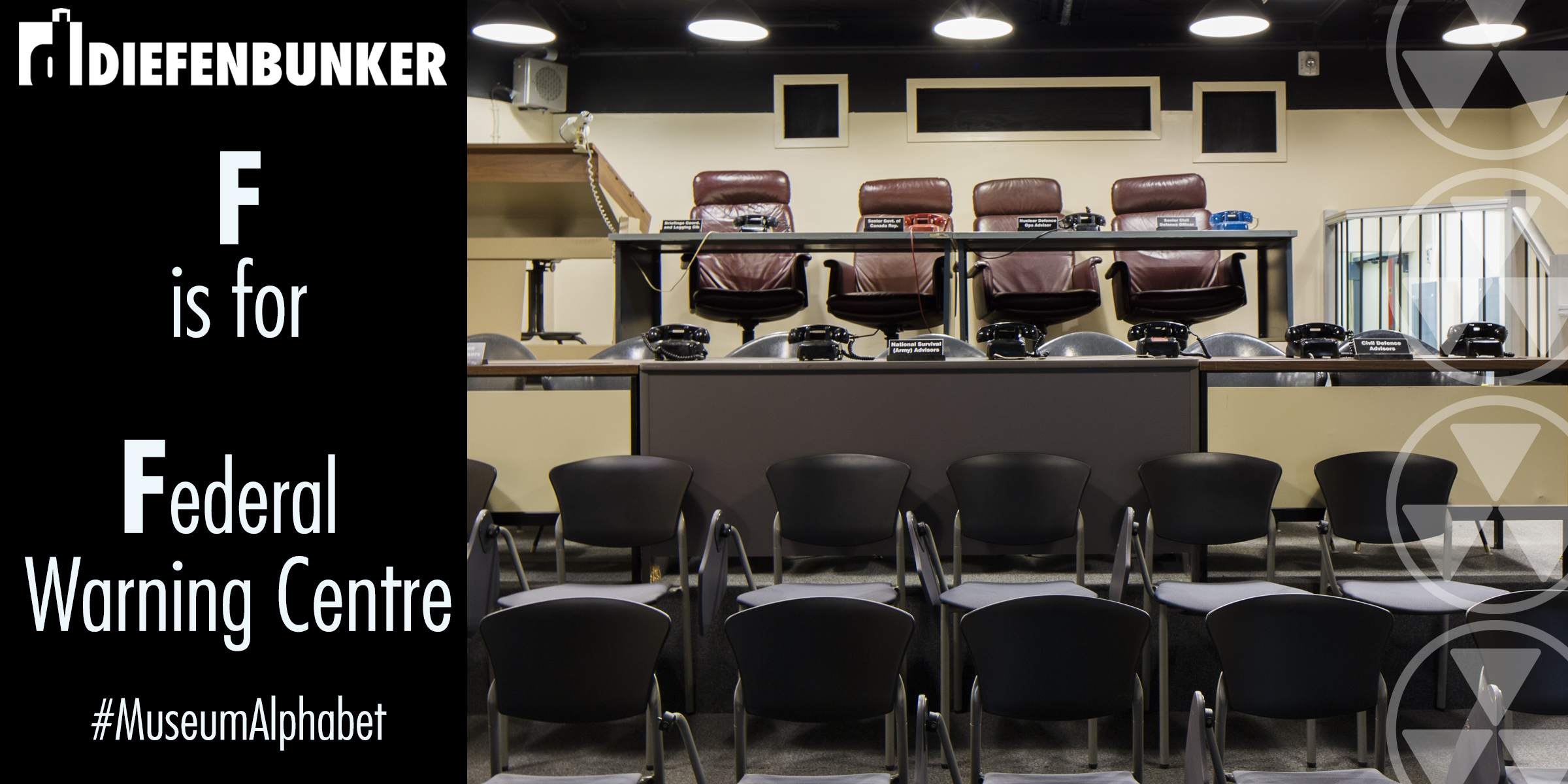
Personnel in the Federal Warning Centre (aka Military Information Centre) would be in constant contact with the NORAD facilities in Colorado Springs, Colorado and North Bay, Ontario. In the event of a nuclear attack personnel were responsible for triggering the air raid siren warning system across Canada. This responsibility switched between Canadian Forces Station Carp (the Diefenbunker) and the NORAD base in North Bay, Ontario.
In the photo featured here of the “lecture hall,” there would have been a digital map of North America, where military developments and other information from NORAD would have been compiled and plotted. The room located beside this housed teletype machines, the primary form of communication. These machines would then relay typed messages through telephone lines. Personnel would also have communicated with other military bases as needed, to obtain an accurate account of the military situation outside.
Photo credit: Leslie Hossack
G is for Geiger Counter
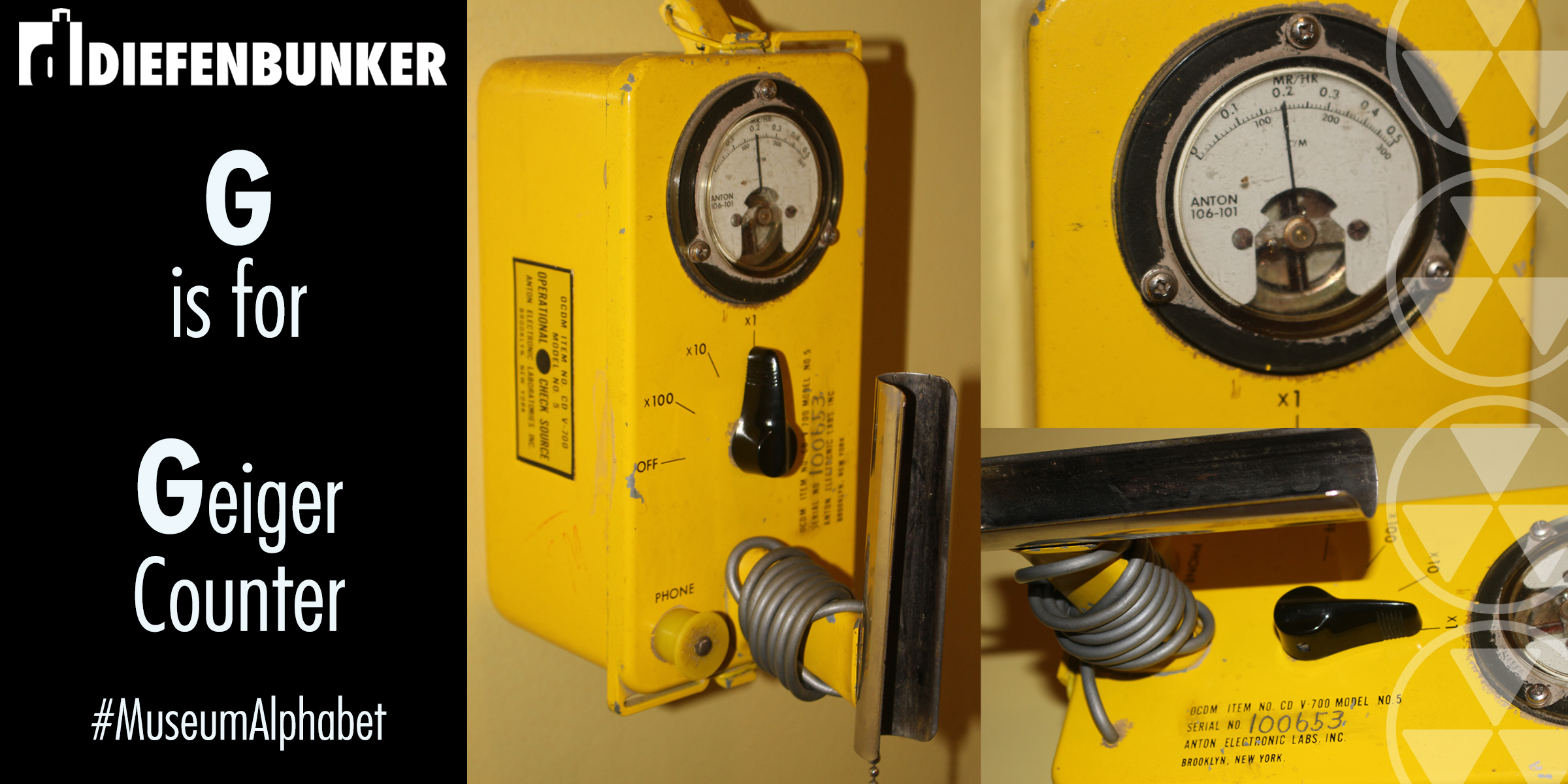
Imagine this: There’s a nuclear attack on Canada, you are one of the 535 personnel designated to take shelter at the Diefenbunker. Upon arrival at the Diefenbunker, you go through the decontamination showers. (See D is for Decontamination). The last step of this process included standing in front of a man with a small yellow device in his hands.
This device is a Geiger counter and it detects your levels of radiation. The Geiger counter was first introduced in 1908 by German physicist Johannes Wilhelm “Hans” Geiger.
The man in front of you waves the silver detector wand over your body assessing your radiation levels. If your levels are too high, you’re going to take a shower 5-6 more times. If you don’t pass the test after 5-6 more showers your final destination is the isolation room down the hall from the Medical Centre where you will be housed for 3 days and then tested again.
We featured the Geiger Counter on our Artifact of the Month on our blog too!
H is for Helipad
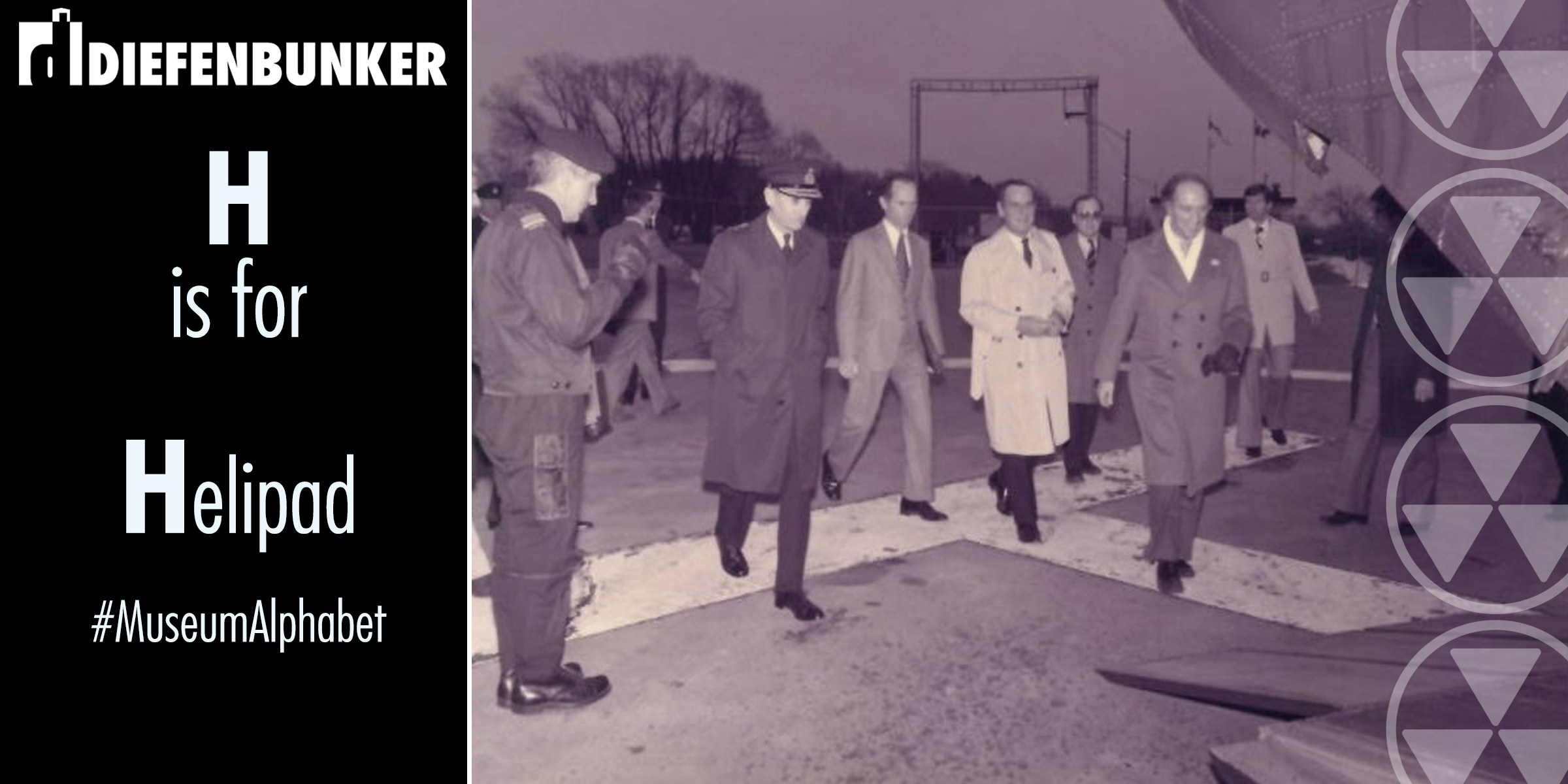
The helicopter pad in the parking lot would have been for emergency transport of high-level government officials.
In the earlier years of the Diefenbunker’s existence these officials would have arrived at the bunker by a train stationed at Union Station (across from the Chateau Laurier in downtown Ottawa), later days it was by bus, and in the final days, by helicopter. While there was never a crisis warranting this emergency transit, the helipad did not go unused. In 1977, Prime Minister Pierre Elliot Trudeau flew to the Diefenbunker on a Chinook helicopter to inspect the facility. After a day-long visit, he drastically cut its funding.
I is for Igor Gouzenko
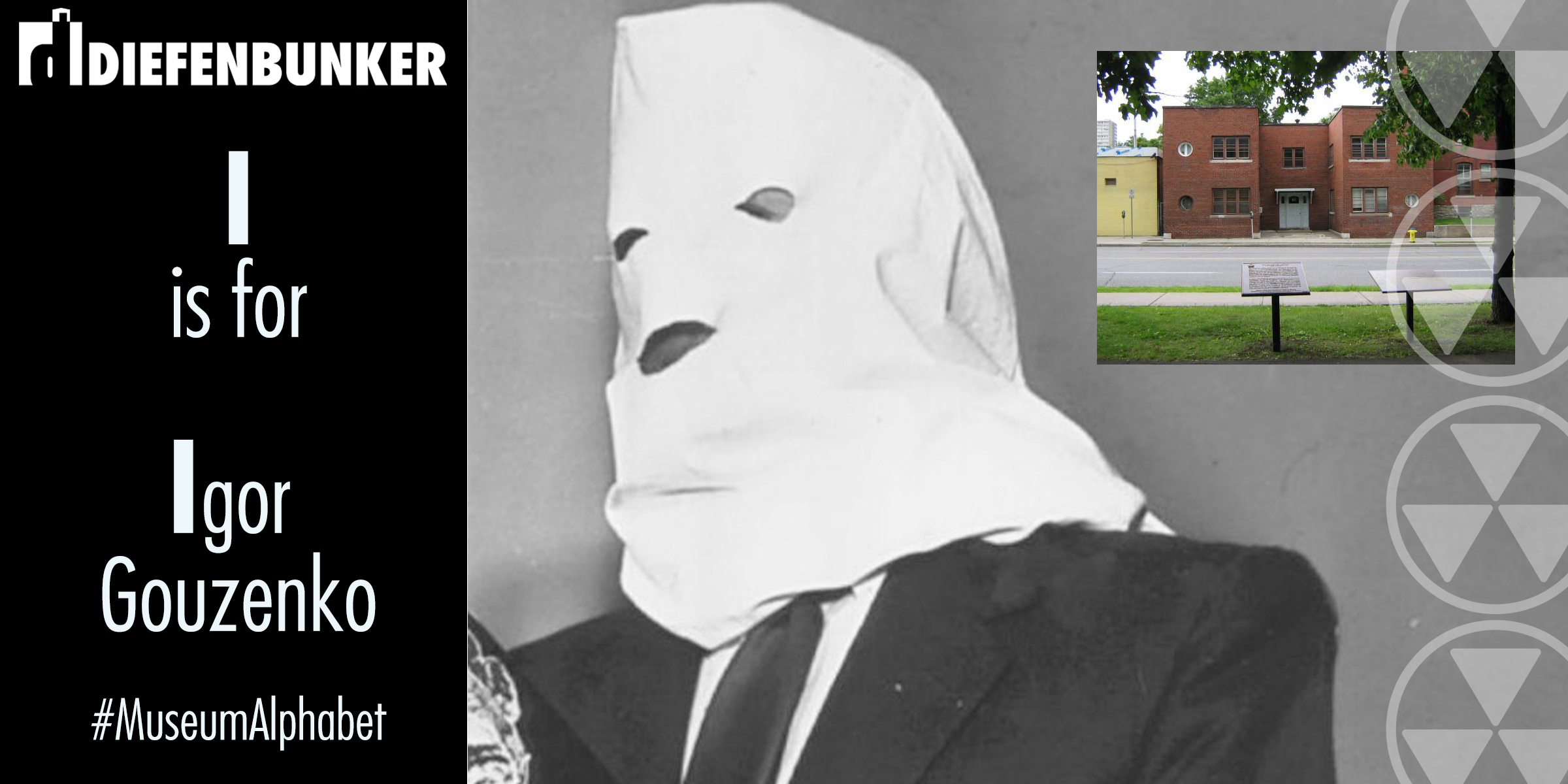
As a result of his defection, Canada′s Prime Minister Mackenzie King created a Royal Commission to investigate espionage in Canada. It confirmed our country’s vulnerability and convinced the federal government to strengthen Canada’s national security system. It is also credited as the starting event of the Cold War.
Did you know that his home was on Somerset Street, right across from Dundonald Park? There is a plaque in this park about him (as seen in the photo) right across from his former residence.
J is for Justin Case
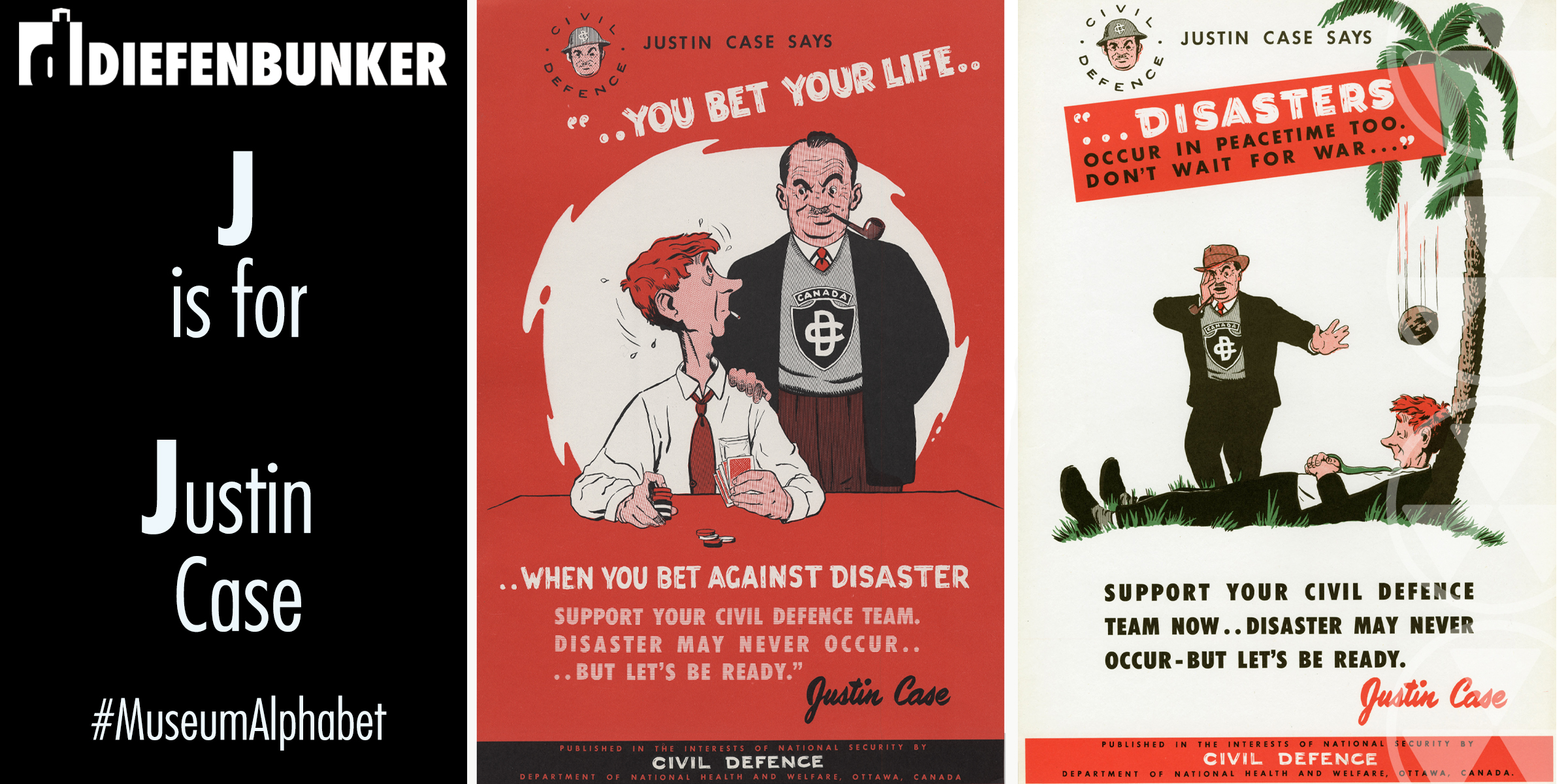
Credit: these Cold War-era Civil Defence posters are in our new Learning Lab at the museum and were reprinted with permission from the City of Victoria Archives. We hope you will come see them when the museum is open in the future.
K is for Kitchen Debate
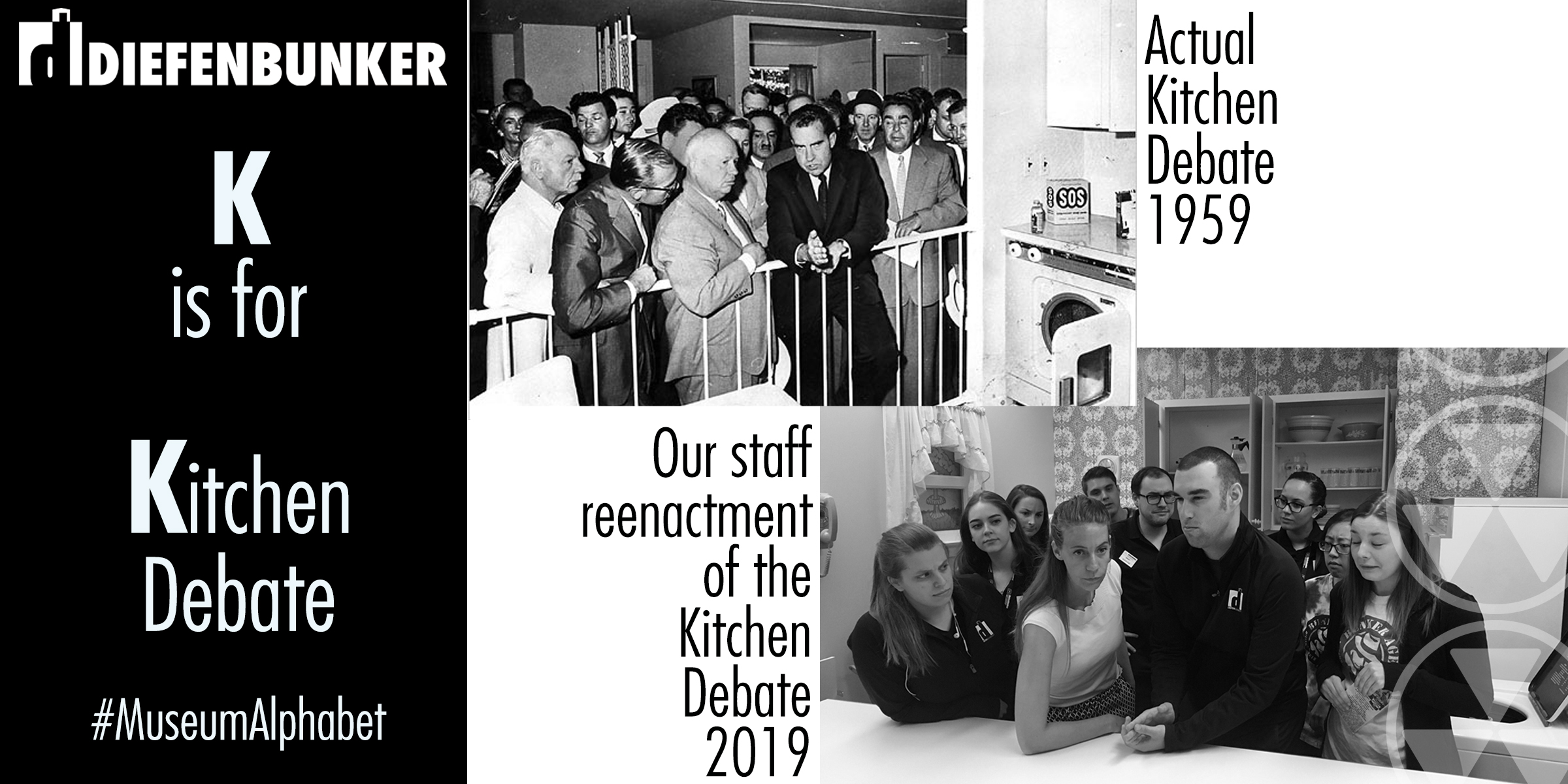
On July 24th, 1959, Vice President Richard Nixon and Soviet leader Nikita Khrushchev began what is known as the #KitchenDebate, during a walk-through at the American National Exhibition in Moscow.
The two entered into a heated debate about communism and capitalism while standing in a recreated model of an American Kitchen. The purpose of the National Exhibition was to strengthen ties between the two countries.
The heated exchange lasted the entire visit becoming one of the most famous episodes of the Cold War.
Our staff had a little fun recreating the Kitchen Debate in our own Nuclear Family Kitchen exhibition at the museum.
L is for Labor-Progressive Party

(1943-1959)
The Communist Party of Canada was founded in Guelph, Ontario in June 1921 as a secret organization. In 1940, it was banned under the War Measures Act. In 1943, it re-emerged as a “new” party, the Labor-Progressive Party (LPP). The period from 1943-1945 was its most successful, with a claimed membership of 20,000.
Only one LPP member, Fred Rose, was ever elected to the House of Commons. Rose was initially elected in 1943 and was re-elected in 1945. However, he is best known as the only member of the Canadian Parliament ever convicted of a charge related to spying for a foreign country. He was sentenced to 6 years in prison for espionage.
